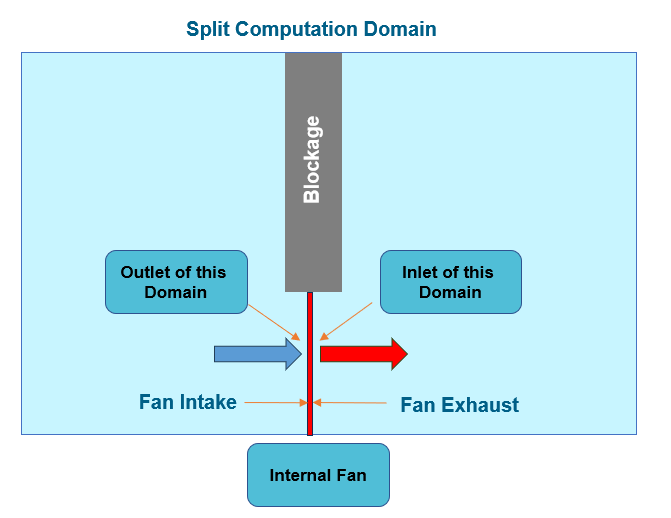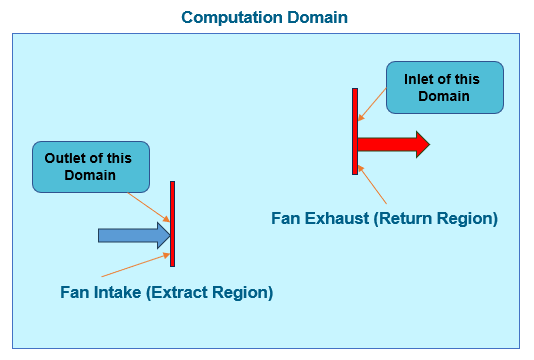Pressure rise
In the context of a fan curve the term pressure rise, often referred to as delta pressure, is a fundamental parameter that plays a pivotal role in understanding the performance characteristics of a fan system. Learn how the flow solver models pressure rise for inlet, outlet, internal, and recirculation fans.
The flow solver computes the static pressure rise as the difference between the fan exhaust static pressure, PSE, and the fan intake static pressure, PSI.
This section demonstrates the flow solver's process for computing static pressure within the context of a fan with pressure rise, as defined by its fan curve. This page also explains the calculation methods when the fan serves as an inlet, outlet, internal, or recirculation fan.
Inlet fan with pressure rise
When the solver computes the pressure rise for the inlet fan, it assumes that the intake of an inlet fan is linked to the environment with ambient conditions, while the fan's exhaust is connected to the inlet of the computational domain.
Therefore, the pressure imposed at the exhaust of the domain is the static pressure, PSE. It is defined as:
where the total inlet pressure is equal to the ambient pressure since the flow is on the incoming side of the fan, PTI = Pa.
In post-processing, you visualize the relative pressures, which lacks the static pressure component. Thus, what you observe is not precisely the total pressure PTI as defined above, which is absolute. This term is now equal to zero since PTI = Pa.
Outlet fan with pressure rise
When the solver computes the pressure rise for the outlet fan, it assumes that the intake of an outlet fan is linked to the outlet of the computational domain, while the fan's exhaust is connected to the environment with ambient conditions.
The pressure imposed at the outlet is a static pressure at the fan intake, PSI. The ambient pressure is known and is equal to the static pressure since the flow is leaving the fan.
On the other hand, the static pressure at the fan intake is
where PdynI is the dynamic pressure at the fan intake.
Using the pressure rise equation, the total pressure at the fan intake is:
Therefore, the static pressure at the fan intake is:
In post-processing, you visualize the relative pressures, which lacks the static pressure component. Thus, what you observe is not precisely the static pressure PSI as defined above, which is absolute. This term is now equal to zero since PTI = Pa.
Internal fan with pressure rise
For an internal fan, the flow solver duplicates the face, splits the computational domain into an outlet and an inlet at the fan location. The intake of an internal fan is connected to the outlet of the computational domain. The fan's exhaust is connected to the inlet.
The pressure imposed at the inlet of the domain is the static pressure:

Recirculation fan with pressure rise
A recirculation fan connects an outlet in a computational domain to an inlet of the fan. The intake of a recirculation fan is connected to the outlet. The fan's exhaust is connected to the inlet of the computational domain.
The pressure imposed at the inlet of the domain is the static pressure:

